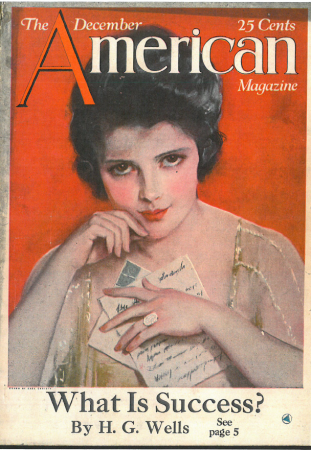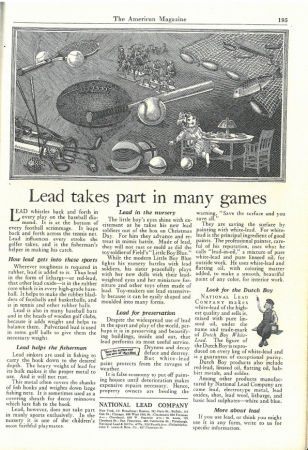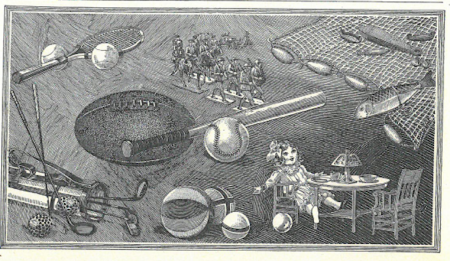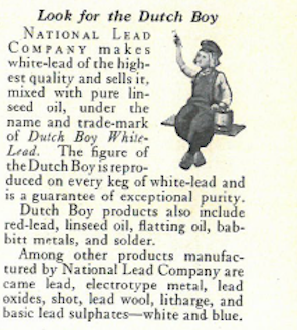I’ve been thumbing through old magazines, looking for advertisements to possibly include in my upcoming book, and came across an ad in this issue of The American Magazine, from December, 1923: It’s an ad for LEAD PAINT on page 195.
It’s an ad for LEAD PAINT on page 195. It’s too small and detailed to include in the book, but fascinating nonetheless. A first glance might look like it’s a joke–like this Saturday Night Live spoof where Dan Akroyd and Jane Curtin discuss highly dangerous toys for children.
It’s too small and detailed to include in the book, but fascinating nonetheless. A first glance might look like it’s a joke–like this Saturday Night Live spoof where Dan Akroyd and Jane Curtin discuss highly dangerous toys for children.
But no, it’s not a joke. The National Lead Company proudly touted its products for decades. Shall we look at this in close-up? Yes, lead was included in the manufacture of sports equipment for kids, toy soldiers, dolls, fishing tackle, golf clubs, and, of course, paint. This ad was part of the start of a vast marketing and public relations campaign to create a positive image for lead paint. The Little Dutch Boy was the trademark of the company, a golden-haired, flush-cheeked, healthy-looking child with a paintbrush full of lead-based paint in his hand, a reassuring icon for parents, and, like Joe Camel, targeted to appeal to younger consumers.
Yes, lead was included in the manufacture of sports equipment for kids, toy soldiers, dolls, fishing tackle, golf clubs, and, of course, paint. This ad was part of the start of a vast marketing and public relations campaign to create a positive image for lead paint. The Little Dutch Boy was the trademark of the company, a golden-haired, flush-cheeked, healthy-looking child with a paintbrush full of lead-based paint in his hand, a reassuring icon for parents, and, like Joe Camel, targeted to appeal to younger consumers.
 The National Lead Company knew full well that lead was dangerous and toxic, but in the days before strict regulation, they were permitted to advertise to kids and to continue to produce their products with relative impunity. It wasn’t until the 1950s when some brave scientists, notably Clair Patterson, began to publish troubling scientific studies that linked lead exposure to neurological problems in children, at great peril to the scientists’ careers. Public opinion finally began to turn against lead-based paint, and by the 1970s, laws were passed lowering acceptable lead levels in paint.
The National Lead Company knew full well that lead was dangerous and toxic, but in the days before strict regulation, they were permitted to advertise to kids and to continue to produce their products with relative impunity. It wasn’t until the 1950s when some brave scientists, notably Clair Patterson, began to publish troubling scientific studies that linked lead exposure to neurological problems in children, at great peril to the scientists’ careers. Public opinion finally began to turn against lead-based paint, and by the 1970s, laws were passed lowering acceptable lead levels in paint.
Lead manufacturers had more success with lead-based gasoline, which wasn’t phased out completely until 1996.